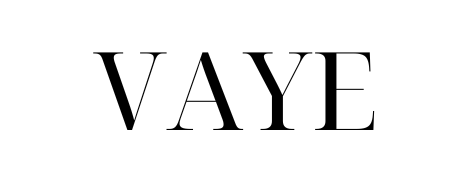
What Your Budget Plan Says About Your Money Mindset (and How to Change It)
Share
We often think that a budget plan is all about numbers. But did you know that your budgeting method reveals a surprising amount about how you think and feel about money? Your budget is actually a mirror of your money mindset —and that's good news. Because once you understand your mindset, you can consciously manage it.
In this blog, we delve into four recognizable money mindset types and show you how you can change your money behavior without losing yourself – with the right tools.
What is a money mindset anyway?
A money mindset is your inner story about money. It's the sum of your beliefs, habits, and emotions surrounding income, spending, saving, and debt. This mindset often develops early on, based on what you learned about money at home, at school, or in relationships.
Budgeting—especially through cash stuffing—suddenly reveals this mindset. How you use your planner, how often you start (or postpone) savings challenges, and how you use envelopes… it all says something about your underlying attitude.
So your money behavior doesn't just come from 'knowledge' of numbers, but mainly from how safe, secure, or free you feel around money.
The 4 recognizable money mindset types
Do you recognize yourself in one (or more) of these types?
1. The spontaneous spender
- Loves living life now – “It will be okay!”
- Budgeting feels boring or restrictive.
- Spends money mostly on fun things, without much planning.
What do you see in the budget plan? Lots of random entries, sometimes entered irregularly, and often lacking an overview.
How do you change this? Build in space for fun! Label a cash envelope "Fun Money" or "Self-Care." Don't make your system strict, but supportive.
2. The anxious saver
- Keeps track of everything, but is constantly afraid of coming up short.
- Doesn't allow himself much, even when he can.
- Thinks that saving is the same as keeping control.
What do you see in the budget plan? Overstrained savings goals, little to no "free space," and often little spending on pleasure.
How do you change this? Set savings challenges with rewards. Budget for yourself too: coffee with a friend, a new pen, a soft sweater. Indulging is allowed and possible!
3. The displacer
- Postpones everything – paperwork, bills, plans.
- Feels stressed at the thought of money matters.
- Thinks: “If I ignore it, it won't be there for a while.”
What do you see in the budget plan? The planner remains empty, the cash binder unused. Or maybe you do have one, but it's stuck in the back of the cupboard.
How do you change this? Start small. Choose a beautiful binder you'll love. Use just one or two envelopes at first. And celebrate every small step with yourself!
4. The balanced builder
- Has goals, but also fun with money.
- Combines overview with flexibility.
- Likes order, but not rigidity.
What do you see in the budget plan? Regular updates, room for dreams, and fixed costs. There's balance.
How do you keep growing? Keep challenging yourself. Mix up savings challenges, try out new styles. Perhaps create a digital download to experiment with goals, or a themed binder for vacation/savings/investment goals.
Why your budget plan says more than you think
A budget isn't neutral. The way you approach your financial planning reveals a lot about your beliefs:
- Are you hard on yourself? Or too lenient?
- Do you feel confident about your future? Or more fearful?
- Should you enjoy money, or do you have to 'earn' it?
By working with your budget plan, you'll get to know yourself better. And with tools like cash stuffing, that process becomes not only transparent but also tangible. You'll literally see your progress growing in the envelopes.
5 practical tips to strengthen your money mindset
-
Schedule a 15-minute "budget date" with yourself every week
Make it a cozy moment: tea, your favorite music, a planner and some rest. -
Use visual aids such as savings challenges and trackers
Our brain loves clarity and motivation. Make it visible. -
Start with envelopes that reflect your goals
For example: "Emergency Fund", "Self-Care", "Mini-Vacation", "Fresh Start". -
Choose a style that makes you happy
The aesthetics of your budget plan determine your motivation. Choose from our collections: Classic, Elegance, Modern, or Not So Basic. -
Reflect regularly: what works for me, what doesn't?
A budget plan is not a rulebook, but a flexible tool that grows with you.
Your money: your style and your growth
A budget plan isn't just a list of numbers. It's a growth tool. An invitation to awareness, self-care, and confidence. By understanding your money mindset, you can turn money into an ally again, instead of a source of stress.
Ready to rewrite your financial story? At Vaye Amsterdam, you'll find planners, cash binders, envelopes, and savings challenges that are not only functional but also aesthetically motivating.
📅 Start your stylish budget plan today: View the collection
